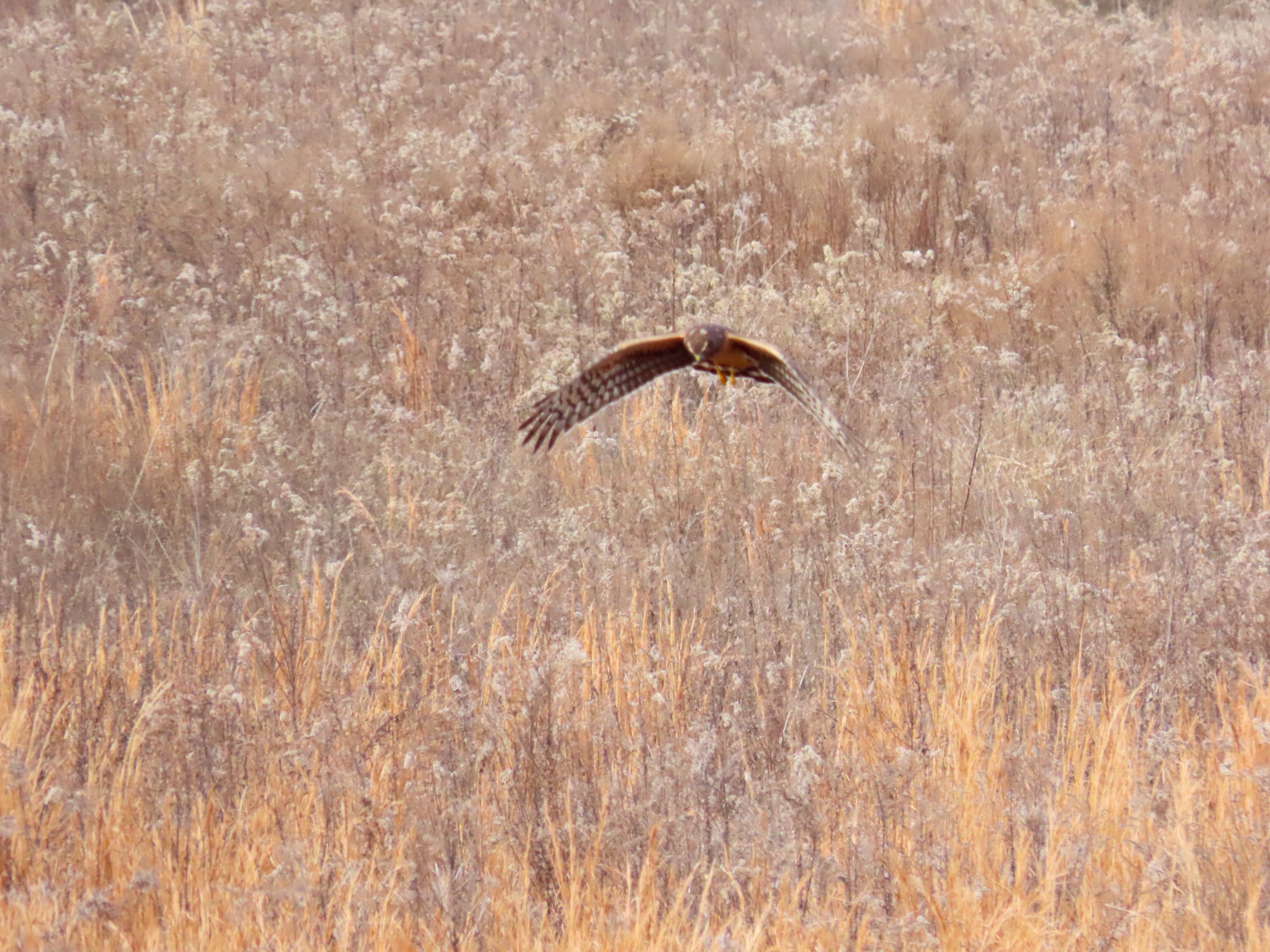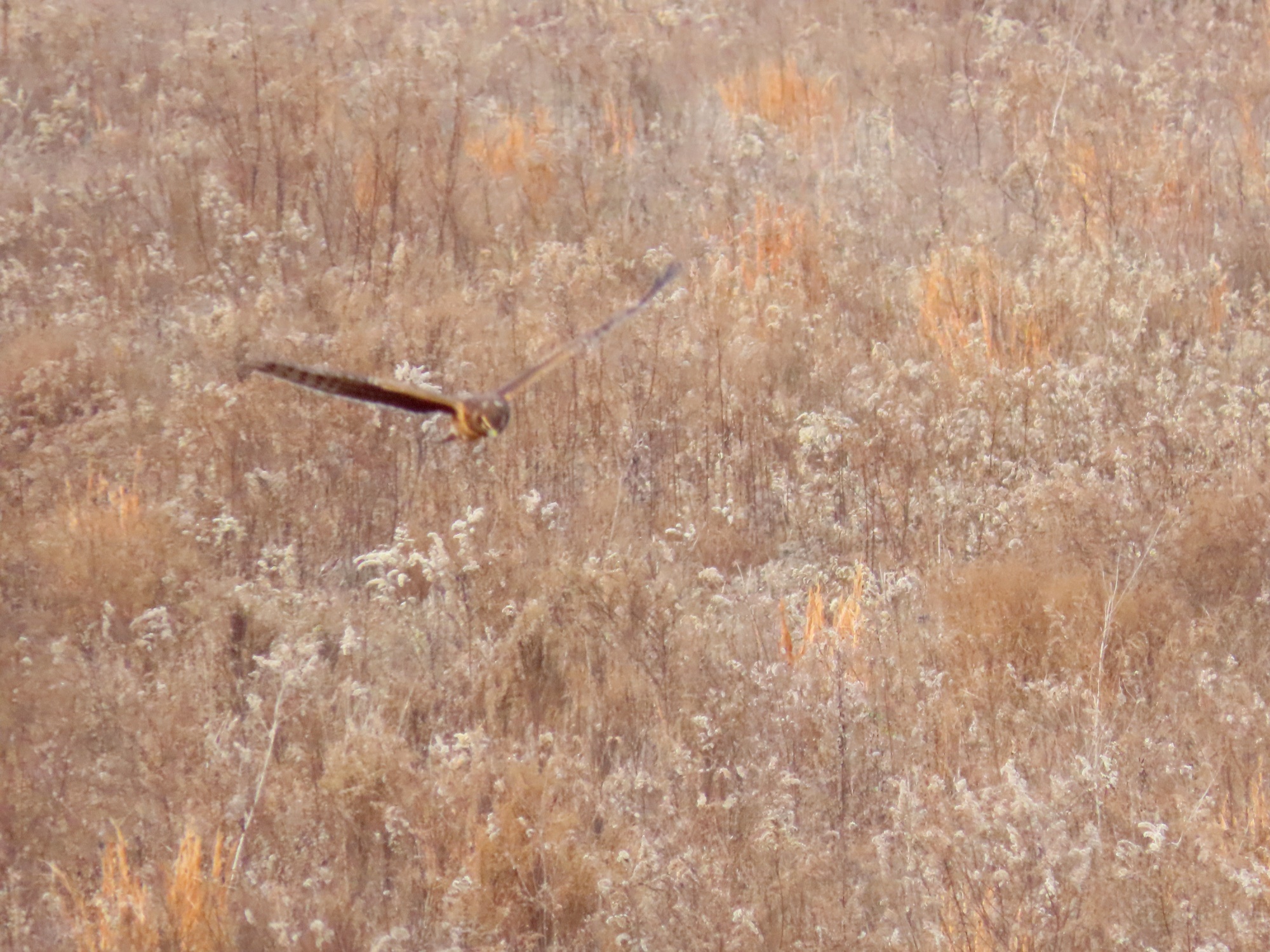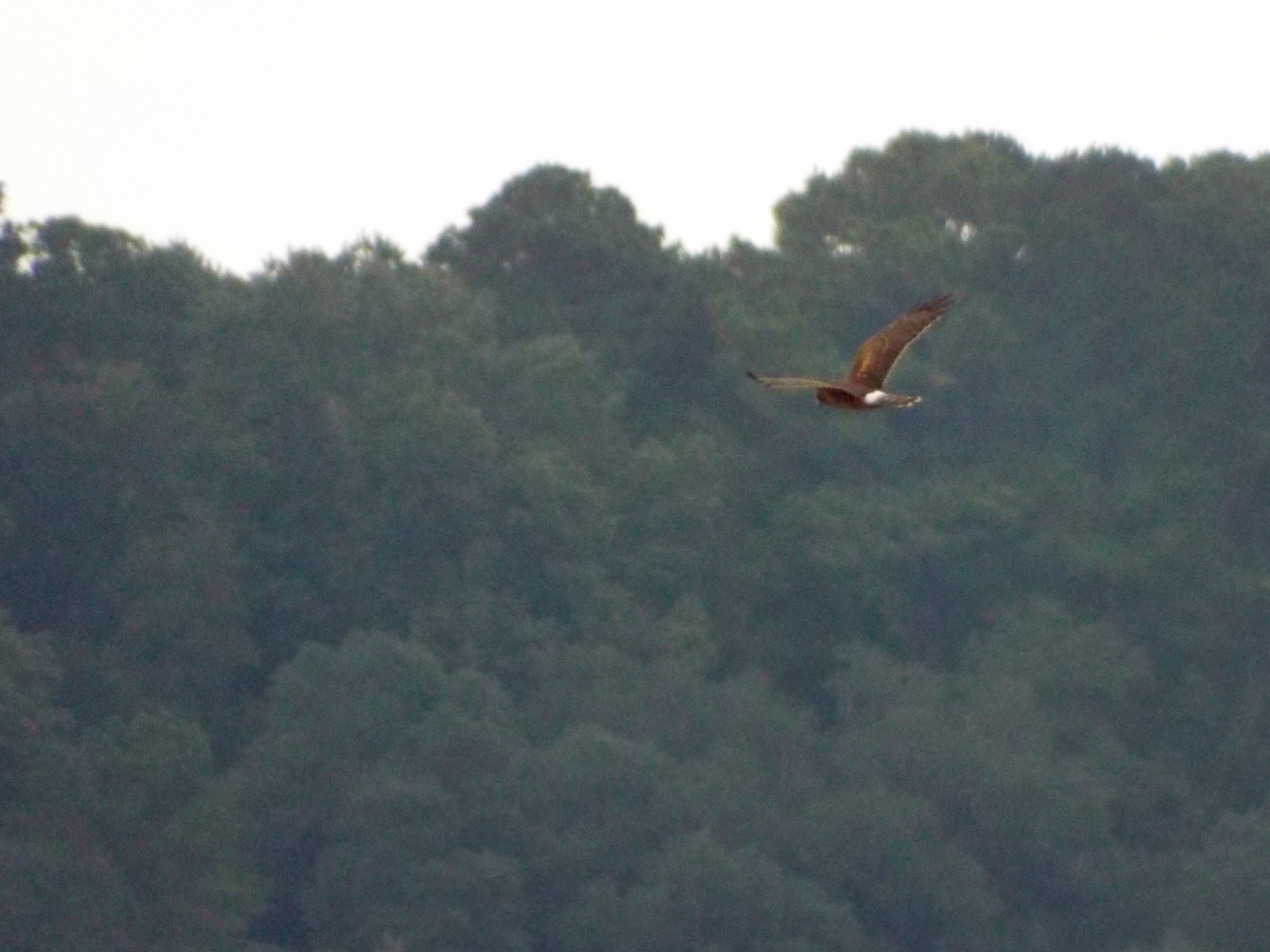




This week for Flora and Fauna Friday, we have the bane of marsh birds, the wraith of the marsh, the Northern Harrier (Circus hudsonius).
The chill of morning lingers in autumn’s wet dawn air. Fog rising, cold steam, from the waking engine of the salt marsh, a metaphor which reflects the serenity of your awoken mental haze, that pleasant AM daze, before the anxious machinations of mind, or marsh, can commence. But then, like a ghostly train of thought steaming on return from yesterday, an eerie specter tunnels into sight. Piercing sunken eyes and pallid plumage, cutting through the fog on silent wings mere feet above the marsh, a Northern Harrier coasts by on his breakfast commute, delivering a shudder of silence to the morning marsh.
The Northern Harrier is a mid-sized hawk, very similar in size to the Red-shouldered Hawk (Buteo lineatus) but bearing many unique physical features. Their tail is long and broad and so are their wings which, held upward in a slight dihedral, offer perfect aerodynamics for controlled gliding. Males are colored a dingy platinum-gray above and cloud-white below, with wingtips and trailing edges stained slate-black. Females are a walnut-brown above and dyed a rust-orange below, with a speckled checkerboard of black and white on their flight feathers. Both sexes have a long banded tail, affixed above to an unmistakable white rump. Like most raptors, their large eyes give them great vision for hunting. Yet, Harriers have honed another sense. Northern Harriers have excellent hearing and even possess a feathered facial disk, turning their face into a parabolic reflector and giving them a distinctly owl-like appearance. They also have elongated legs, making them stand taller than other raptors their size. Both these features give them a subtly uncanny appearance compared to other hawks.
A Harrier’s keen senses, long legs, and controlled gliding flight pattern come together to form the backbone of their hunting strategy. Northern Harriers cruise, silently and with infrequent wingbeats, on the short air thermals rising off the tops of sunbaked marshes and fields. From just a few feet up, they scan the grasses and reeds for movement while listening for motion and vocalizations, before reeling back and plunging straight down on unsuspecting prey, reaching their long legs through the grass to grasp. Northern Harriers primarily feed on songbirds within the salt marshes of the Sea Islands but will eat just about anything of suitable size, particularly rodents, small rails, lizards, frogs, and large insects. The Northern Harrier is found throughout North America but calls the marshes of Edisto Island home in fall and winter. Here they can readily be seen patrolling the vast mashes of the Dawhoo River along National Scenic Byway 174.